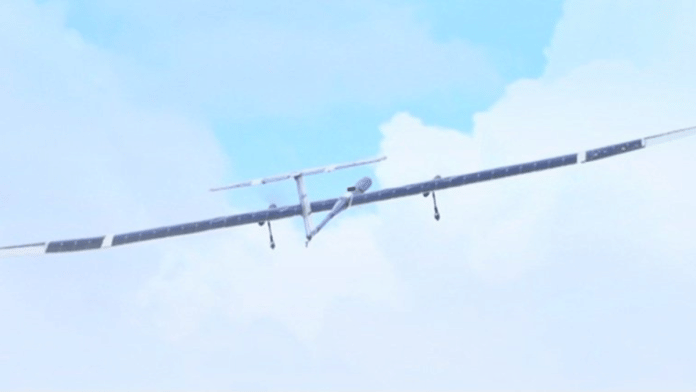New Delhi: Bengaluru-based NewSpace Research and Technologies Pvt Ltd (NRT) announced Saturday that its long-endurance drone, the solar-powered High Altitude Pseudo-Satellite (HAPS), had carried out its first flight lasting over 21 hours. The development comes as a big fillip to India’s plan to have its own long-endurance drones capable of flying in the stratosphere.
The project is being spearheaded under the Innovation for Defence Excellence (iDEX) initiative of the defence ministry. Under this, NRT has signed a contract for an initial proof-of-concept demonstrator, which targets a solar-powered flight lasting longer than 48 hours.
Sameer Joshi, CEO of the start-up and a former Air Force pilot, announced on X, formerly Twitter, that the company’s prototype completed its flight during a Winter Solstice trial on 22 December.
21+ hours in the Air – NewSpace Research and Technologies #NRT creates a #National #UAV #Endurance #Record #Benchmark in India
A huge #win for the #Indian #Aerospace & #Defence R&D #ecosystem; this feat was accomplished using our #cuttingedge #SolarPowered UAV development… pic.twitter.com/6K3BROp0Tn
— Sameer Joshi (@joe_sameer) December 23, 2023
The Winter Solstice, the shortest day of the year, tests the solar-powered Unmanned Aerial Vehicle’s (UAV) endurance at its worst. The next flight will take place on 21 June or the Summer Solstice, when the Sun will be at its brightest.
The IAF has included HAPS under a Rs 1,000 crore ‘Make I project’ of the Government of India. This means that 70 percent of the funding will come from the government.
Upbeat about the NRT feat, defence sources told ThePrint that this was the next big thing in air warfare and that the flight included both day and night flying, with the UAV using solar energy for travel during the day and using its solar-charged battery for flying at night. The sources refused to get into details of what altitude the UAV flew at, but said the plan is to have it fly in the stratosphere at about 65,000 feet, above air traffic.
For context, commercial aircraft typically fly between 31,000 and 38,000 feet, or at about 5.9 to 7.2 miles.
Since the HAPS operates on solar power, it can continue to fly for months.
Also Read: India drops plan to arm Heron drones under Project Cheetah: Here’s why
India’s first stratospheric vehicle?
The HAPS UAV is part of a new genre of solar-powered platforms being designed across the world for persistent surveillance, communications, and specialist science missions.
Both the IAF and the Navy are on board with the project and are looking at acquiring this capability in the short term as well as in the long term.
In India, the National Aerospace Laboratories under the government’s Council of Scientific and Industrial Research is also working on a similar project, but details of its progress are yet unknown.
Defence sources told ThePrint that India does not have a stratospheric vehicle.
Running exclusively on solar power and flying above the weather at 16-20 km autonomously for months at a stretch, a HAPS platform will fill a capability gap between satellites and HALE (High Altitude Long Endurance) UAVs, sources said.
The sources explained that HAPS is ultra-lightweight but has a strong body with the ability to take onboard batteries and other systems. They said that as the battery technology improves, the endurance would also grow.
The intended surveillance payloads for HAPS include electro-optical/ infra-red (EO/IR) solutions, synthetic aperture radars (SAR) besides communication payloads — including range extenders, electronic intelligence (ELINT) and electronic warfare (EW).
The existing technology limits of the ISR payloads for HAPS allow observations of up to 80-100 km from stratospheric altitudes, which is 2-3 times more as offered by MALE (Medium Altitude Long Endurance) UAVs. ISR, or Intelligence, surveillance, and reconnaissance (ISR), is vital for military operations.
Sources said the HAPS technology will offset the lack of critical ISR gap felt during the Doklam crisis, the Balakot incident, and the ongoing crisis in Ladakh.
The Navy will be an immediate beneficiary since this allows continuous low-cost manning of the Indian Ocean Region (IOR), sources said.
They also explained that the civilian use of HAPS is equally important since it can provide telecommunication connectivity all over India — especially in regions with patchy terrestrial network issues because of the challenges of terrain and costs.
Also Read: Replacing ageing Cheetah/Chetak choppers to take at least 10 yrs, hopes pinned on LUH & leasing






